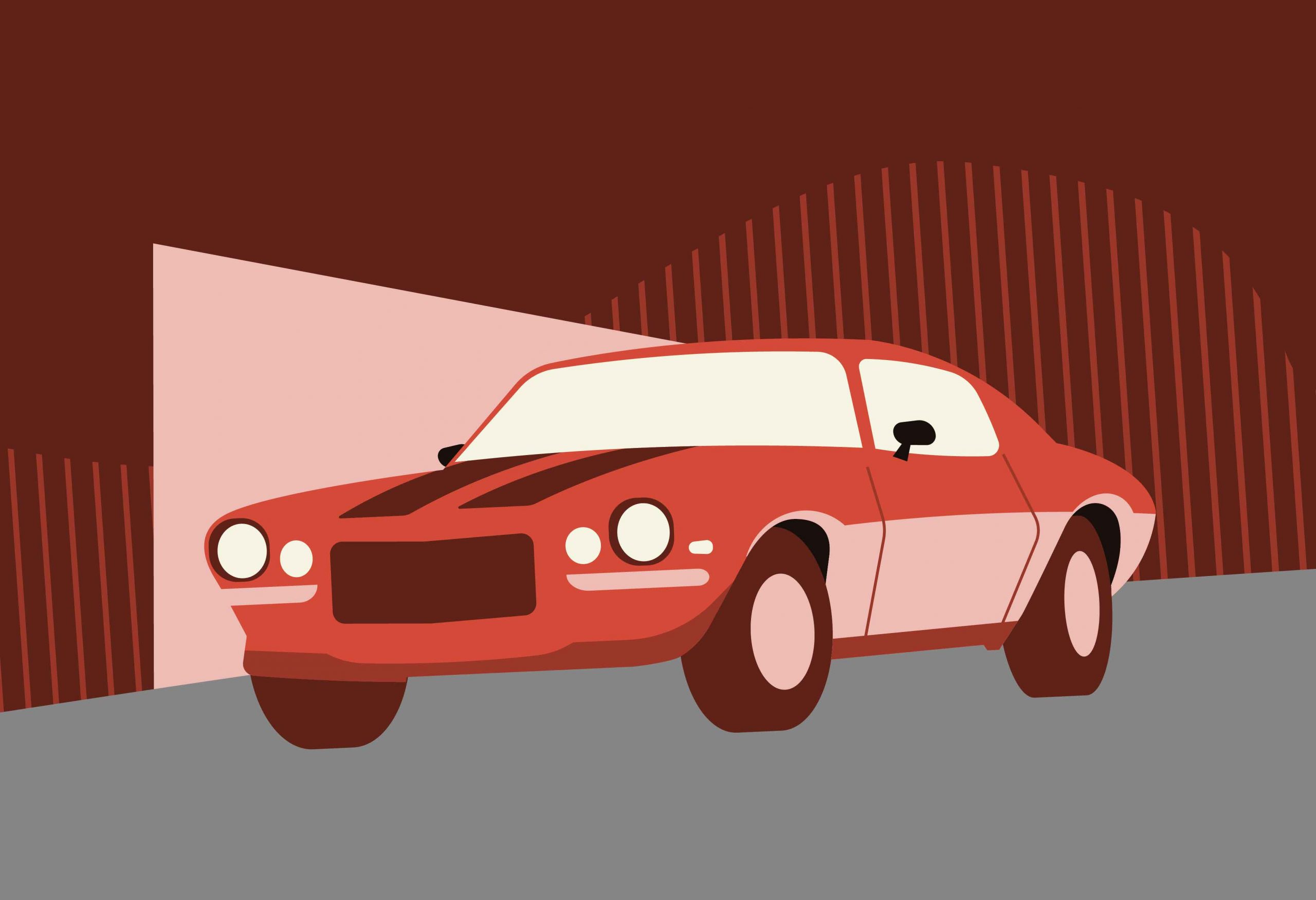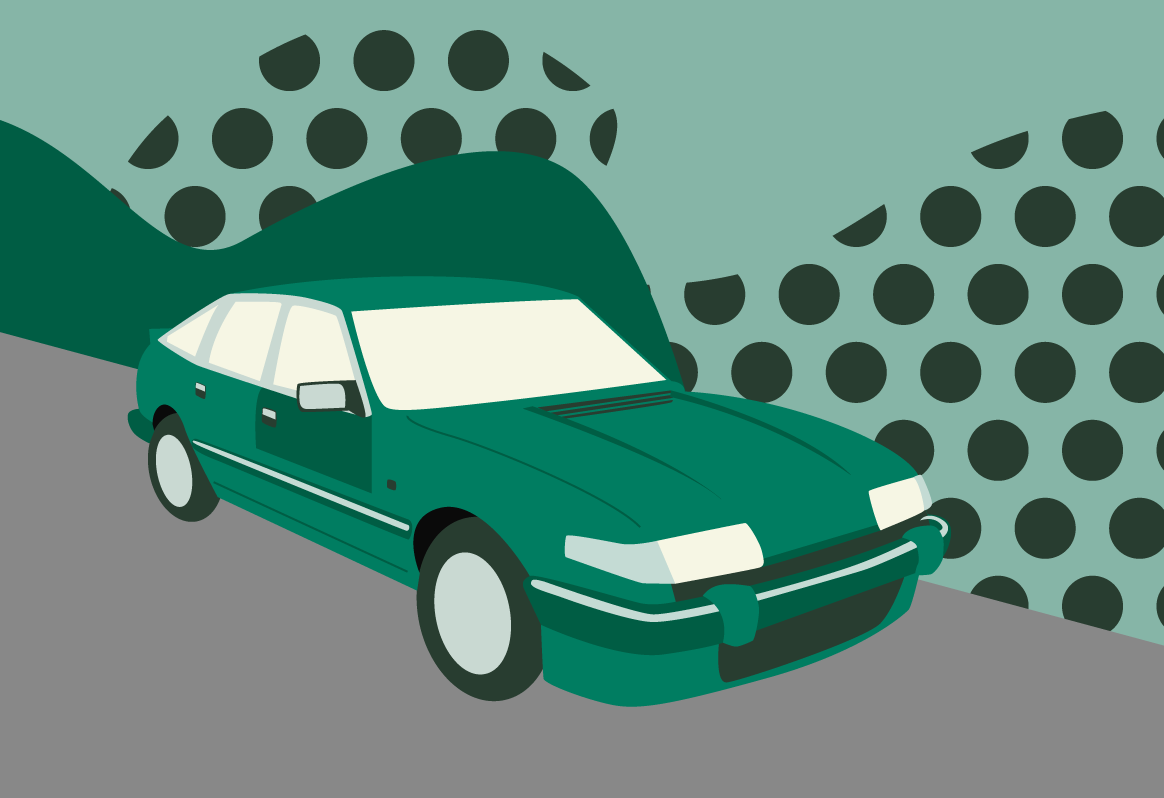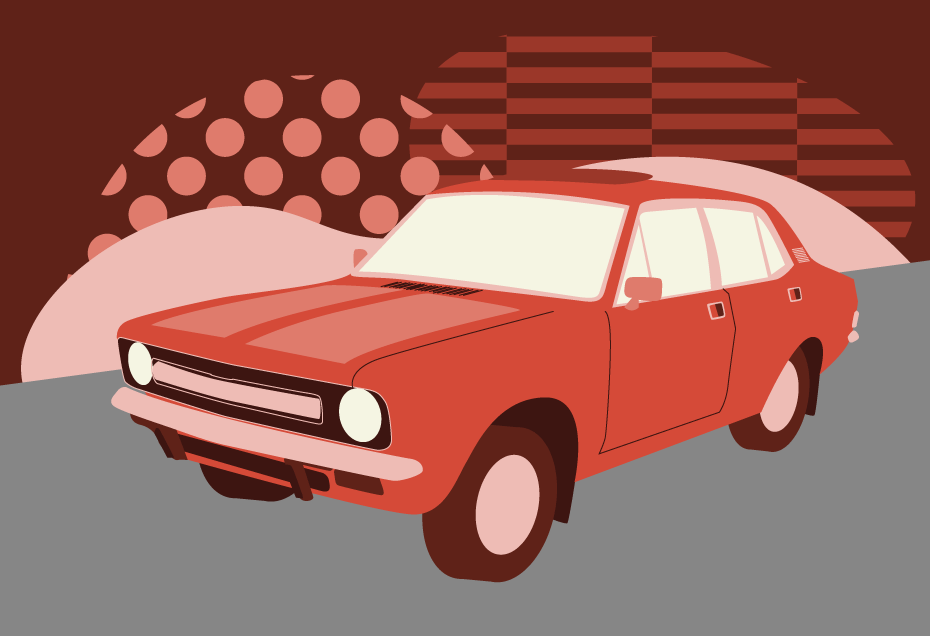The Chevrolet Camaro was the marque’s answer to the startlingly successful Ford Mustang, which invented a whole new category, the ‘pony car’.
The American motoring world was caught on the hop by the Mustang, and the Camaro was one of a number of cars rushed out to compete head on.
It became the Mustang’s chief rival, and here we look at the first two generations.
While Ford was racking up more than a million Mustang sales in the car’s first 18 months, Chevrolet was one a number of carmarkers scrambling to come up with an answer.
Where was their affordable sporty car? The Corvair and the Nova didn’t cut the mustard, so General Motors bosses gave the go ahead for a new car – codenamed Panther – once the stunning success of the Ford became apparent in 1964.
Just two years later, in September 1966, the Camaro was ready to take on the mighty Mustang.
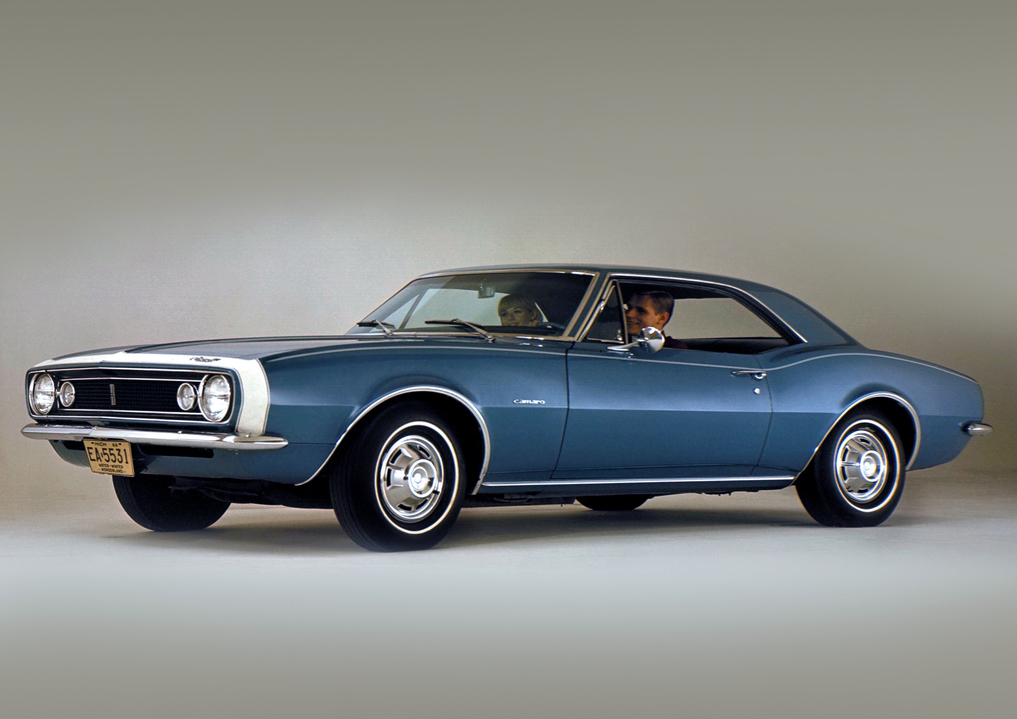
Development of the Chevrolet Camaro
There was a need for speed to get the Camaro on the road as quickly as possible, with sales leaking away to Ford.
So, just as the rapidly-developed Mustang used a lot of components from the Falcon, the Camaro borrowed heavily from the upcoming compact Nova II, including its hybrid structure of a unibody with a front subframe.
Produced as a 2+2 in couple and convertible form, the new car used a 3.8-litre inline six as a base engine, with a 4.1-litre six and various V8s up to a big block 6.5-litre unit (396 cu in).
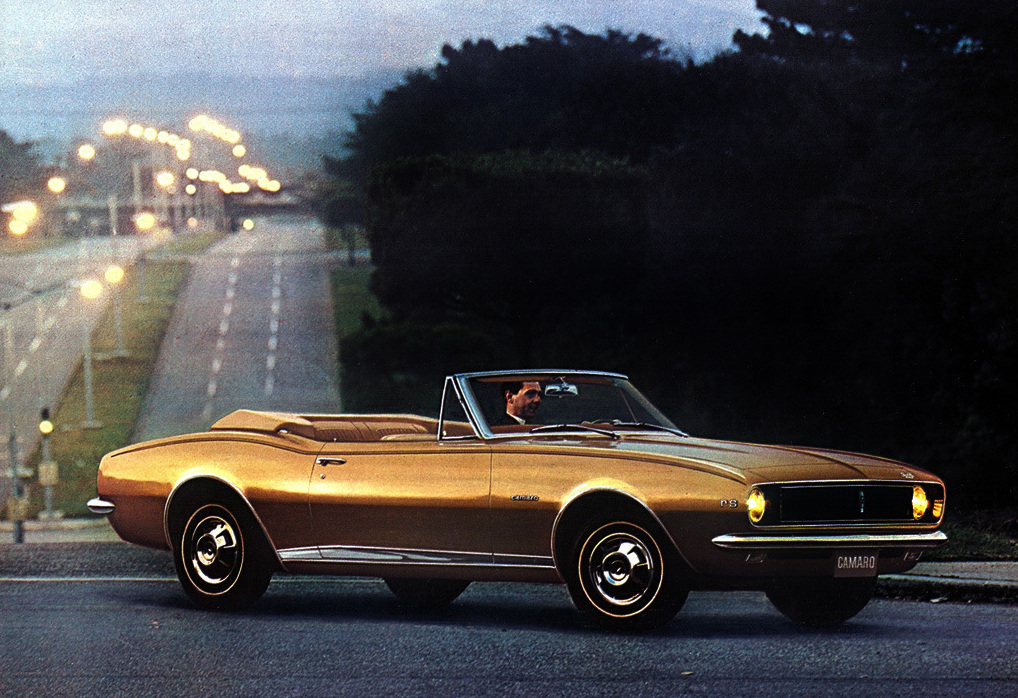
Among a whole host of dealer options, there were three main packages available – the RS appearance package, with hidden headlights, revised taillights and exterior bright trim; the SS, a performance package with either 5.7-litre or 6.5-litre V8s and chassis upgrades; and the Z/28, a virtually race-ready option with a solid-lifter 4.9-litre V8, 4-speed box, power disc brakes, upgraded suspension, and bonnet and boot stripes.
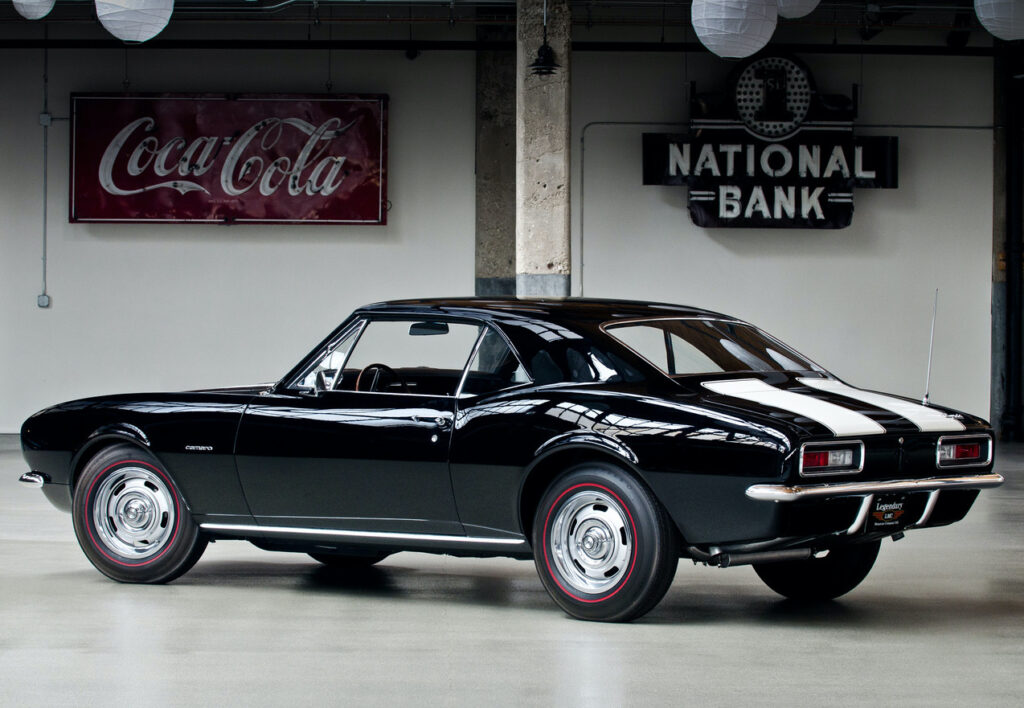
All engines were available with either a 4-speed manual transmission or Powerglide automatic box.
The Camaro coupe would go on the market in 1967 with a base price of $2,466, with a premium of $240 for the convertible.
Early years of the Camaro
Having entered the ‘pony car’ fray three years late, it was asking a lot for the new Chevy to unseat the Mustang, but first-year sales of around 220,000, compared with the Ford’s 480,000 for the same period, were not to be sniffed at.
Just over half were base model cars – the cheaper, no frills sporty motors that typified this new market – while 64,842 RS packages were sold, 34,411 SS models, and 602 Z/28s.
An RS/SS convertible with a 325bhp version of the 396 V8 raised the car’s profile when it was seen as the pace car for the 1967 Indianapolis 500.
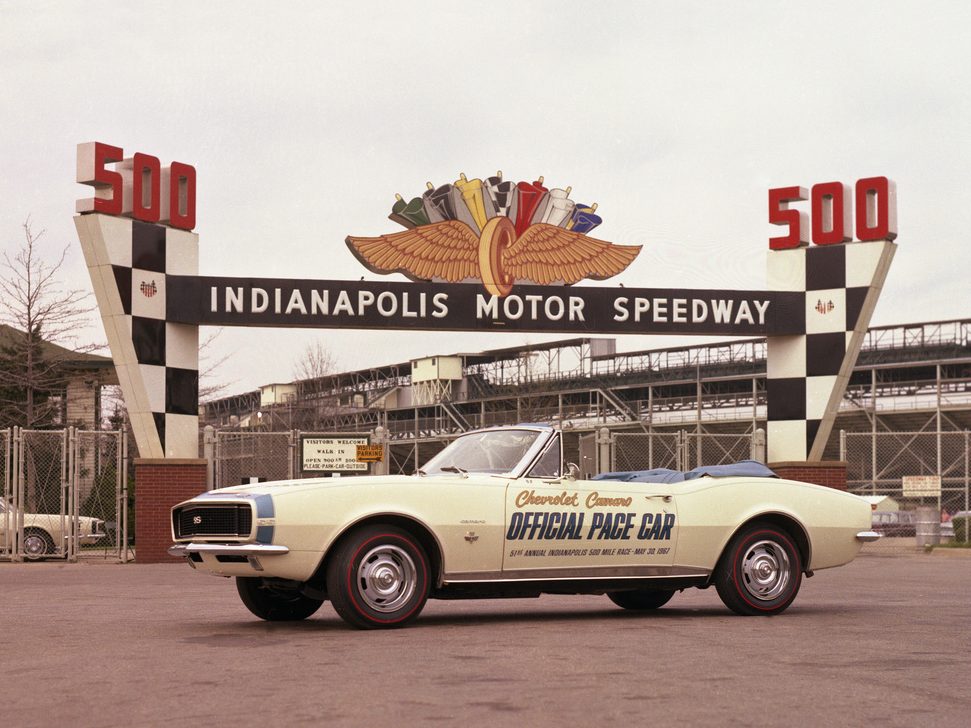
The Z/28s were designed to go racing, and its success did no harm in promoting the car as a high performance great.
Powered by a 290bhp, 4.9-litre, high-compression V8, and in the hands of team owner Roger Penske and driver Mark Donohue, it won three races in the SCCA Trans-Am series, and 10 of the 13 races the following season.
Changes for 1968 were minimal, but did include the introduction of Astro Ventilation, a fresh-air inlet system that did away with the need for vented windows, and minor changes to the taillights and front grille.
For the SS, the 396 cu in V8 producing 350bhp was added as an option, while the Z/28 now appeared in Camaro brochures, boosting its sales to 7,199 out of an improved 235,000 cars sold.
The bodywork was given a more sporty, aggressive makeover for 1969 and, to many, that year’s Z/28 is the ultimate Camaro, at least in terms of appearance.
Like our illustration of the Chevrolet Camaro: the Mustang’s fiercest rival at the beginning of the article?
Download a free high-quality poster version here.
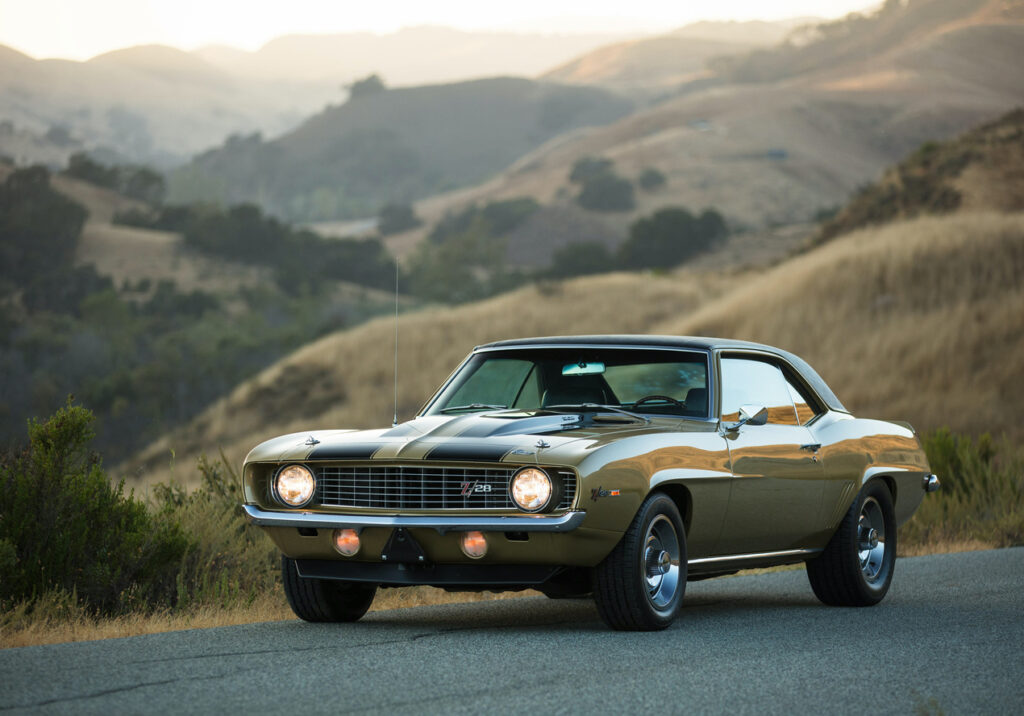
The restyle included skinnier, three-block rear lights, two large round headlights pushed to the sides of the grille, a sharper, V-cant grille, and reworked body panels.
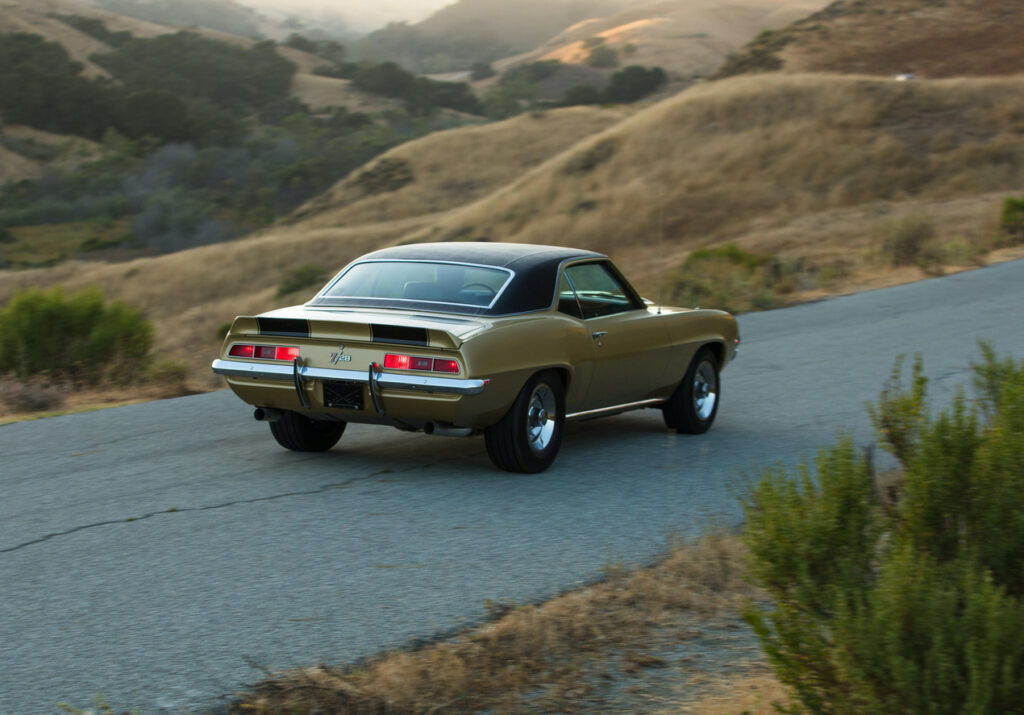
A white and orange Z11 convertible with houndstooth upholstery paced the Indianapolis 500, with 3,675 replicas made available for sale.
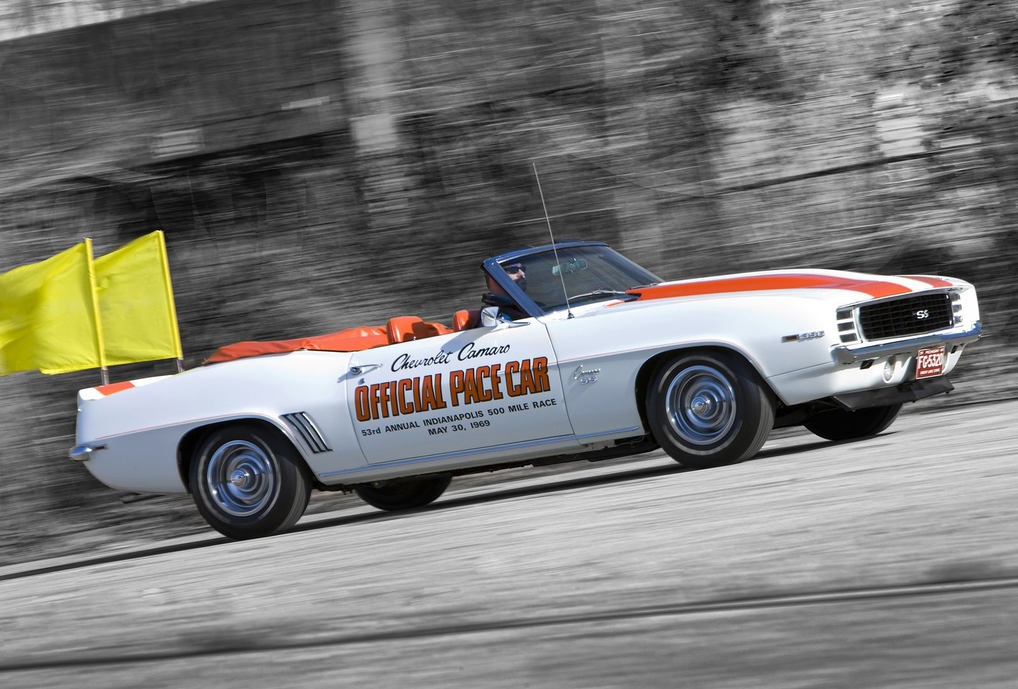
While GM dictated that no engine larger than 400 cu in could be placed in a Camaro, dealers circumvented the rule via a special ordering process known as Central Office Production Orders (COPO).
This resulted in the COPO 9560 and 9561, the latter powered by a 427 cu in (7-litre), big block V8 pumping out 425bhp.
Just 69 9560s were built, powered by the ZL-1 big block. Because of their scarcity, they are now among the most collectible Camaros of all.
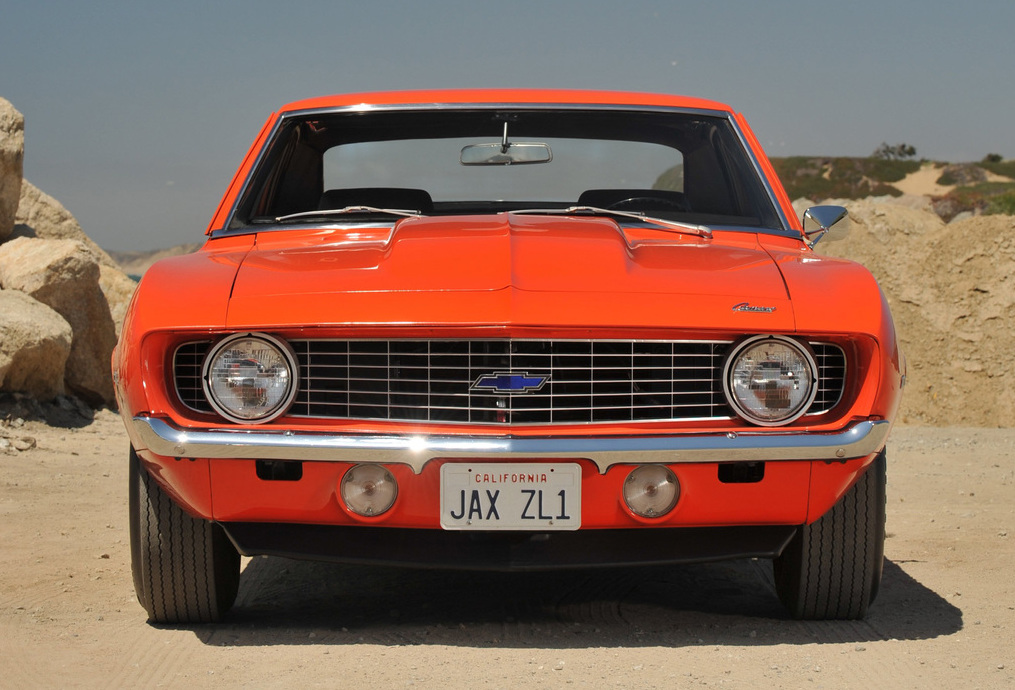
Second coming of the Chevrolet Camaro
The second generation Camaro, introduced in the spring of 1970, was longer, lower, and wider than its predecessor, and was only available in coupe form.
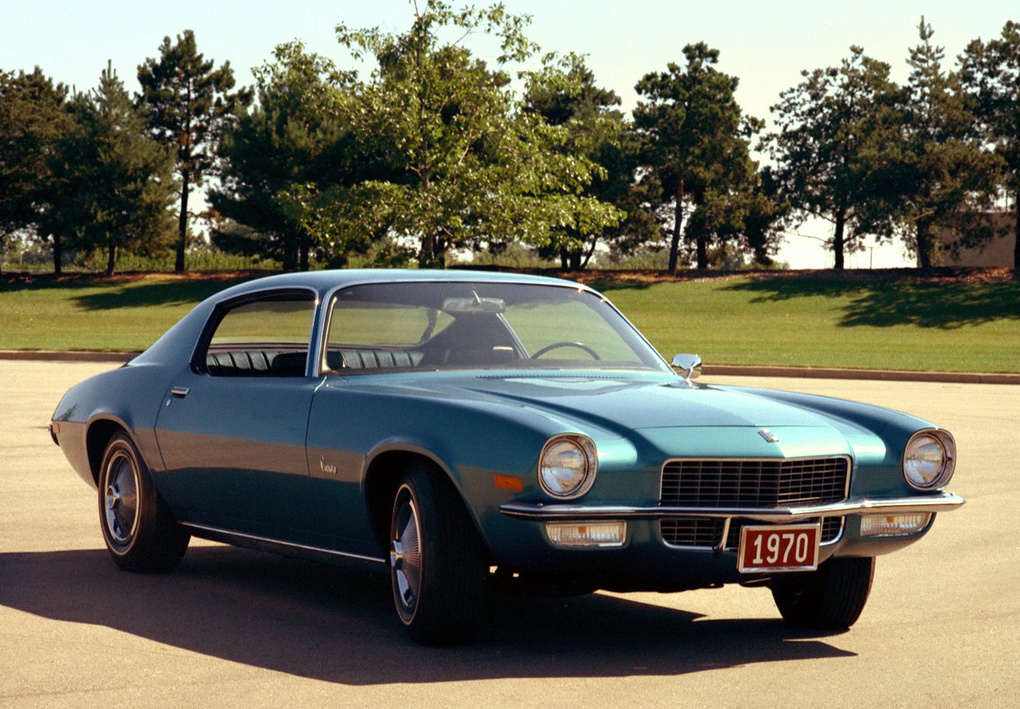
While using a similar mechanical structure to the first car, the mark II was an all-new car, with a large, pointed grille giving it a more aggressive appearance. Its overall shape drew comparisons with the Ferrari 250GT Berlinetta Lusso.
Engines and drivetrains were carried over from the previous model, although the base unit was now the 4.1-litre six, and buyers could still choose the three packages, RS, SS, and Z/28.
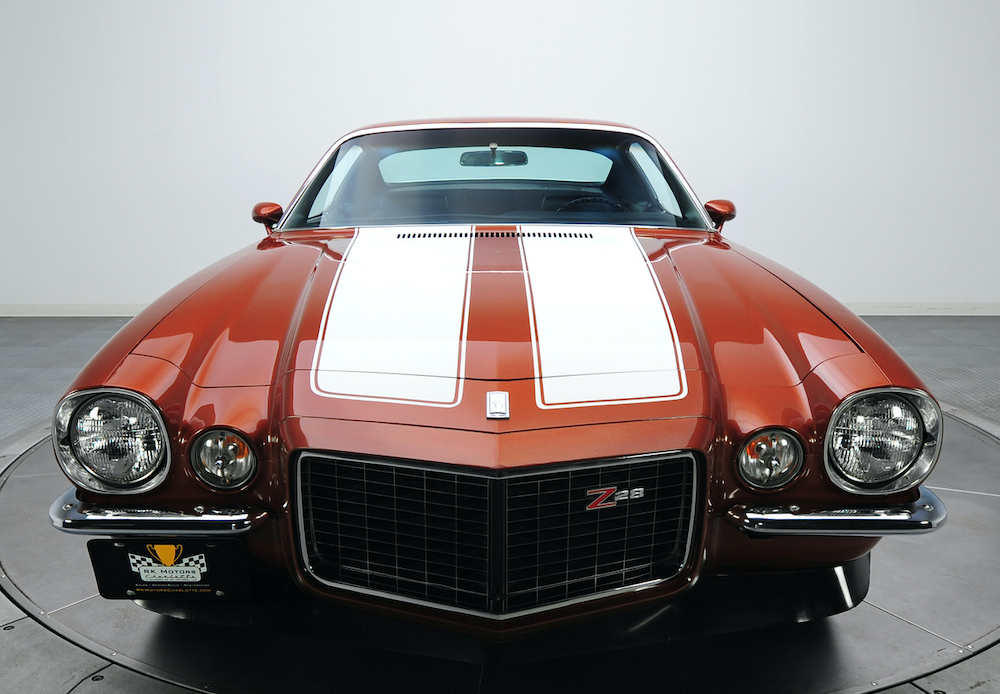
There were changes on the inside too, with a new curved instrument panel featuring round dials for the gauges.
There were new Strato bucket seats, for 1970 only, with an optional centre console and an upgrade on the all-vinyl upholstery to cloth with a woodgrain dash.
Under the bonnet, the Z28 (with the slash in its name removed) now came with a new, high-performance 5.7-litre V8, producing 360hp and a peak of 380lb ft of torque.
Car and Driver magazine tested a Z/28 in May 1970, and described the Camaro as “an automobile of uncommon merit”, “a Camaro like none before”.
“It would be every bit as much at home on the narrow, twisting streets of Monte Carlo or in the courtyard of a villa overlooking the Mediterranean as it is on Interstate 80.”
Adrian Flux American car insurance
It described the car as “a stunning machine from almost any vantage point”, but more understated in design than its predecessor, with a dimmed “performance image”.
But the performance itself was anything but dimmed, even if the car’s extra maturity and driveability saw the Z/28 lose some of its “thrill”.
“It’s a better engine now, but the loss of a carefree and irrepressible adolescent spirit can never be witnessed without some regret,” it wrote.
Better sound deadening gave the impression from inside the cockpit of taming the engine, resulting in “a car of brilliant performance for its displacement and with prep school manners—not the combination that brought the Z/28 to pre-eminence within the car culture.”
Camaro loses horsepower
There were few visual changes for the 1971 model year, but the Camaro – along with other American performance cars – began to lose some horsepower.
General Motors mandated that all engines had to run on lower octane, lower lead, or unleaded fuel, which meant that the high-performance, higher-compression engines used in the Z28 and SS dropped between 30 and 50 horsepower.
This was compounded by a two-month, GM-wide strike, and declining interest in pony cars because of sky-high insurance rates.
As a result, sales took a hit, and there was even talk of the Camaro being cancelled when another lengthy strike at the Norwood, Ohio plant where it was built left more than 1,000 cars having to be scrapped because they would not meet 1973’s new bumper regulations.
Production in 1972 was down from 220,000 in the car’s first year to just 68,600, but the car survived, although it was the last year of the SS396 and 350 models.
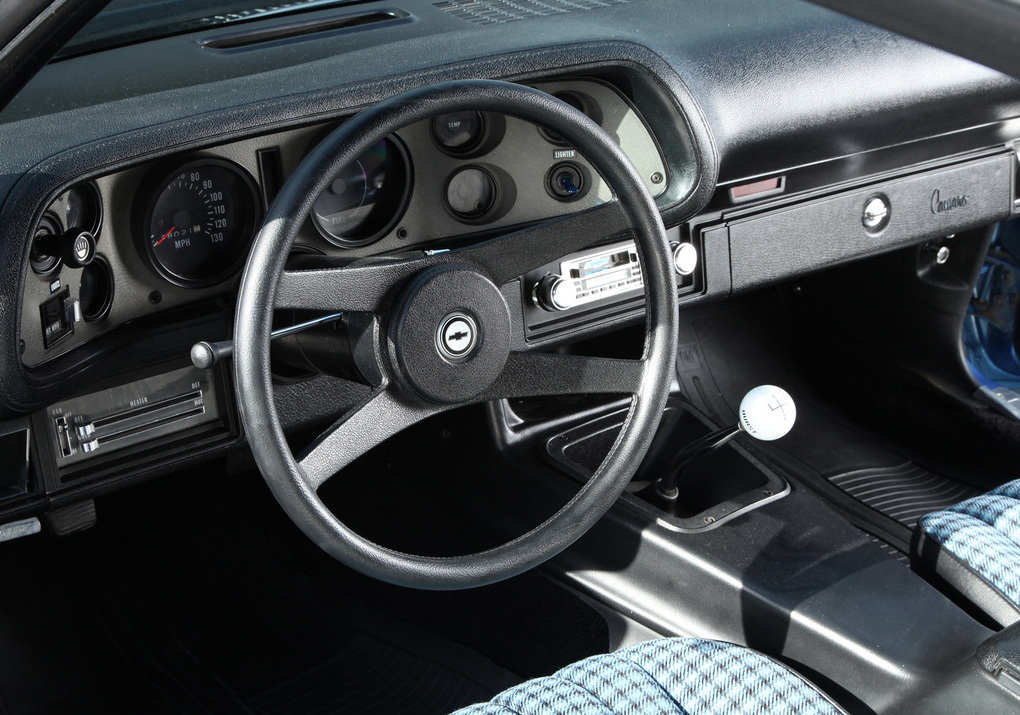
Official horsepower ratings continued to fall, mainly because of the switch between gross horsepower (measured by a dyno) and net horsepower (measured from an engine in a fully functioning vehicle).
For example, the LT-1 350 V8 used in the Z28 fell from 330hp to just 255 net, and then down to 245hp when yet more stringent emissions standards came in.
New look for Camaro
The Camaro lost its distinctive deep grille for 1974, when full-length 5mph impact bumpers became mandatory across America.
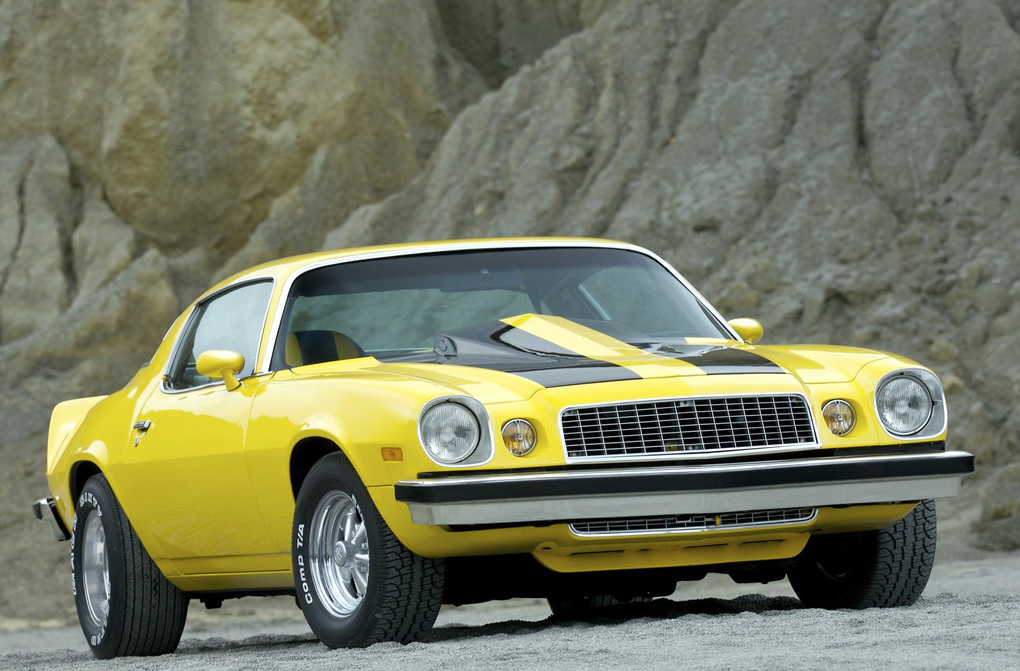
In came a narrower, sloping grille, which did at least retain its point, with a strip of aluminium running across the front and wrapping around the front wings.
At the rear, the round, separate lights were replaced by blocks that wrapped around the rear body panel.
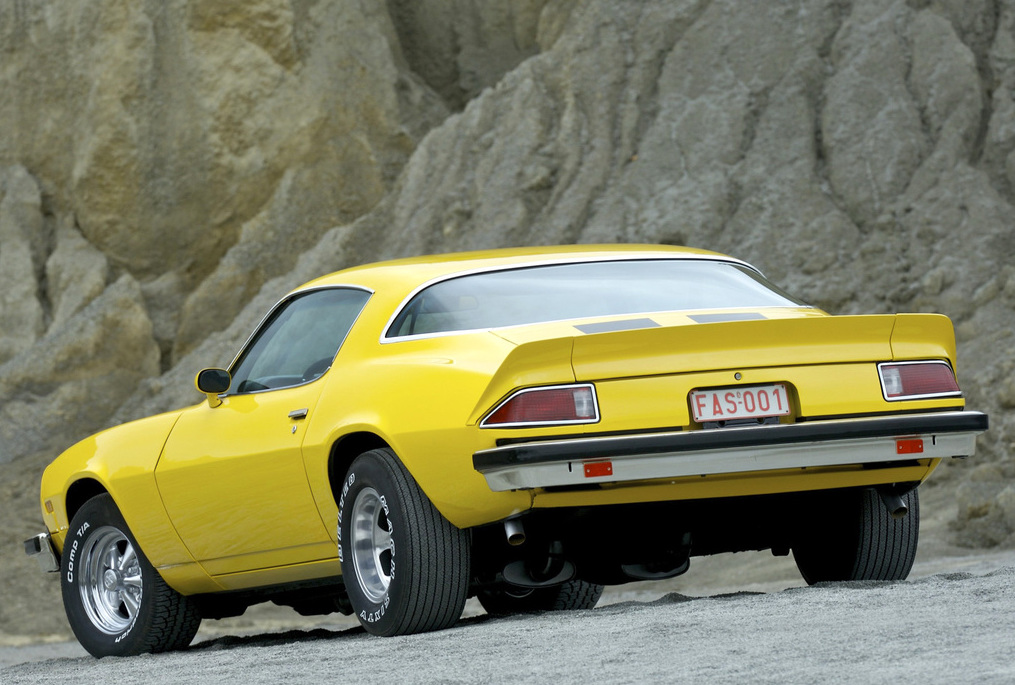
The Z28 got bold new bonnet graphics, and Car Craft magazine’s Steve Collison was impressed with the new, state-mandated design.
His road test, however, focused heavily on the car’s average 10mpg fuel economy, his journey coming two months after the first OPEC oil embargo of October 1973.
Despite the car having gained weight and lost some zip thanks to the emissions controls, Collison described “an excellent machine, if not for economy, then easily for performance and handling. It’s just the kind of car you’d let the little woman take to the store; but don’t, she might not bring it back.” Well, it was the 1970s…
Like our illustration of the Chevrolet Camaro: the Mustang’s fiercest rival at the beginning of the article?
Download a free high-quality poster version here.
Z28 dropped, new efficient engines
Catalytic converters were added for the 1975 model year, and the Z28 was dropped from the range.
The cat was better at controlling emissions than previous systems, and GM made a point of advertising “Chevrolet’s new Efficiency System”, which boasted of longer service intervals, and long-lasting spark plugs.
The only real change on the outside was a wraparound rear window that removed the pillars to give improved rear visibility.
Ever more strict emissions controls resulted in an acceleration in the downward spiral of power and, with the downsizing of the Mustang and dropping of Chrysler’s Barracuda and Challenger, the Camaro and its sister Firebird were the last true pony cars standing.
The six cylinder engines could only throw out a miserly 105bhp, while even the 350 V8 was strangled into delivering just 145bhp or 155bhp where a four-barrel carb could be used.
The drop in power is not quite as dramatic as the figures suggest compared with earlier cars, because of the switch from gross to net ratings.
Sales held steady, with 145,770 only slightly down on 1974’s 150,000.
Return of the Z28 and power is back
For two years, the Pontiac Firebird Trans-Am – a GM F-bodied car like the Camaro – was left as the sole surviving true performance pony car.
Indeed, the demise of the pony car had looked a sure thing as inflation and energy shortages ravaged America (sound familiar?), but the Camaro hung in there and, in 1977, the Z28 was back to compete with the Trans Am.
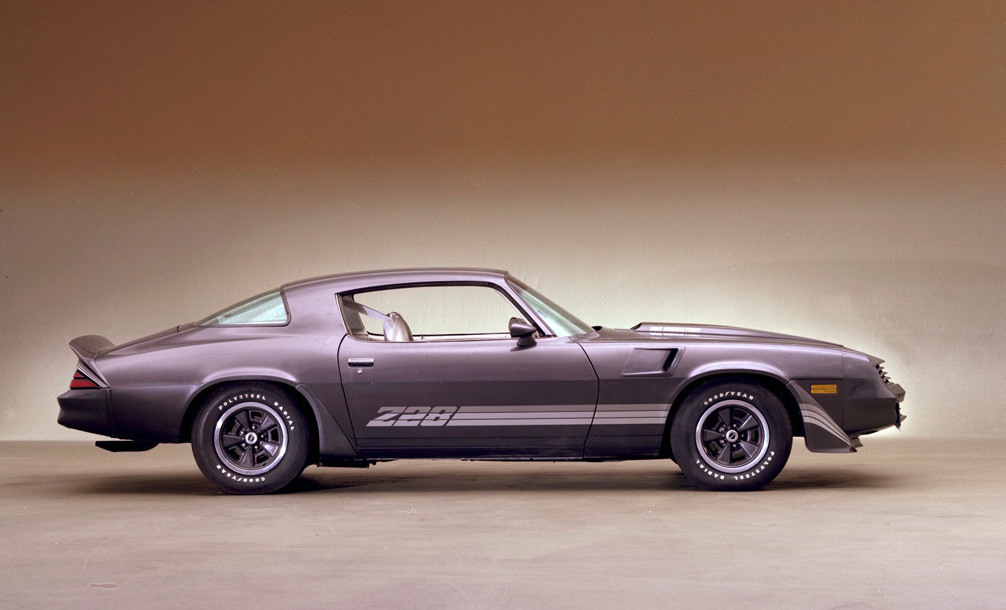
As we’ve seen, the Z28 had appeared to be in terminal decline as its power was gradually stripped away, but the Trans Am’s strong sales in 1976 prompted a rethink at Chevrolet – maybe the performance pony car wasn’t dead after all.
Power from the LM1 350 cu in V8 was up to 185bhp, and it was only available in the Z28.
Car and Driver, testing a car in April 1977 alongside a Trans Am, described a “road machine of the first rank”.
“Both cars are superior examples of what a true American GT automobile should be,” it wrote.
Stiffer suspension, painted rally wheels, bigger tyres, a large spoiler and Z28 graphics marked the car out from the standard Camaros.
For the first time, 1977 saw the Camaro outsell the Mustang, with 218,853 cars produced.
Final years of the mark II Camaro
The aluminium bumpers were replaced by body colored urethane versions, while a translucent T-top roof was added – aping the Trans Am – for those who lamented the loss of the convertible.
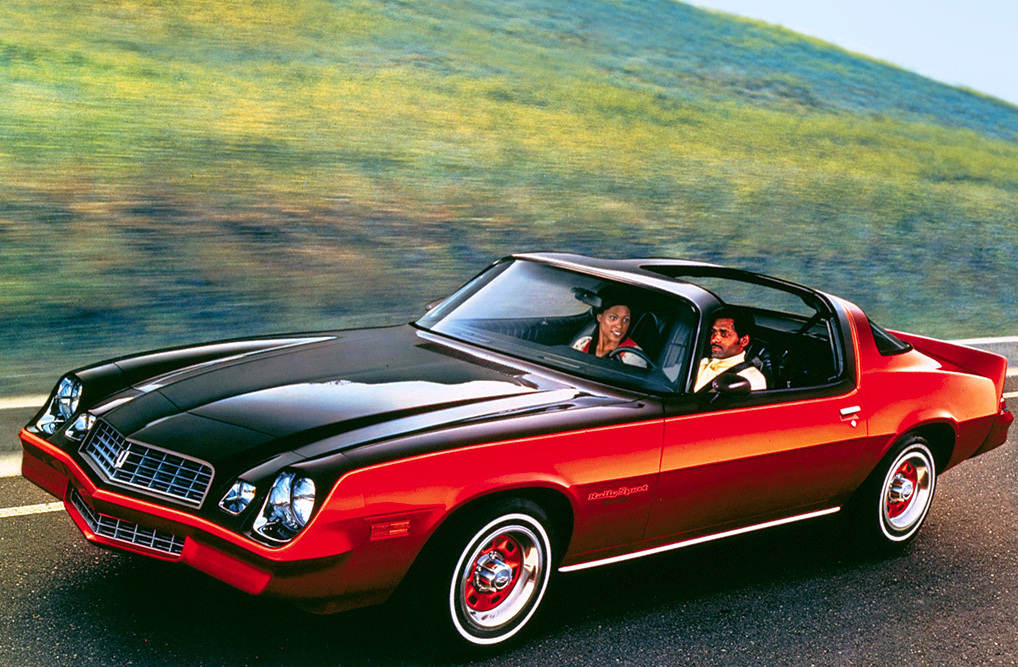
A whopping 272,631 Camaros were sold in 1978, its best year yet, bettered by 10,000 in ‘79 when the European-influenced Berlinetta name was added as a luxury model. Camaro sales would never be as high again.
The Z28 came with a front spoiler and fender flares, again a nod to the Trans Am.
For 1980, the old inline six was replaced by a V6 3.8-litre, while the 5.6-litre V8 was exclusive to the Z28, which gained new, smaller graphics, and optional five-spoke wheels.
Sales suffered in the last two years of Camaro second generation’s run, as Chevrolet was working on its replacement, with just 126,139 sold in 1981, the last year of production.
The Z28’s Computer Command Control, a forerunner of modern engine management systems, and new emissions controls, saw power back down, this time to 175bhp, or 165bhp for the version sold in California.


